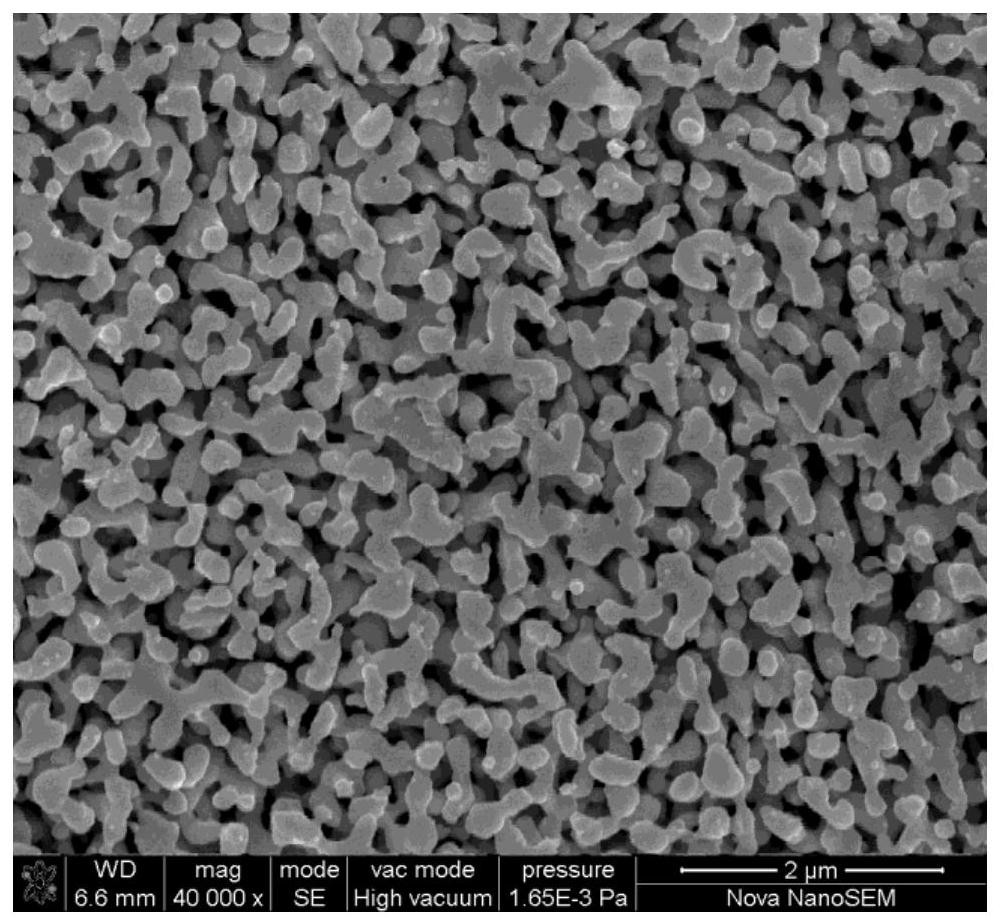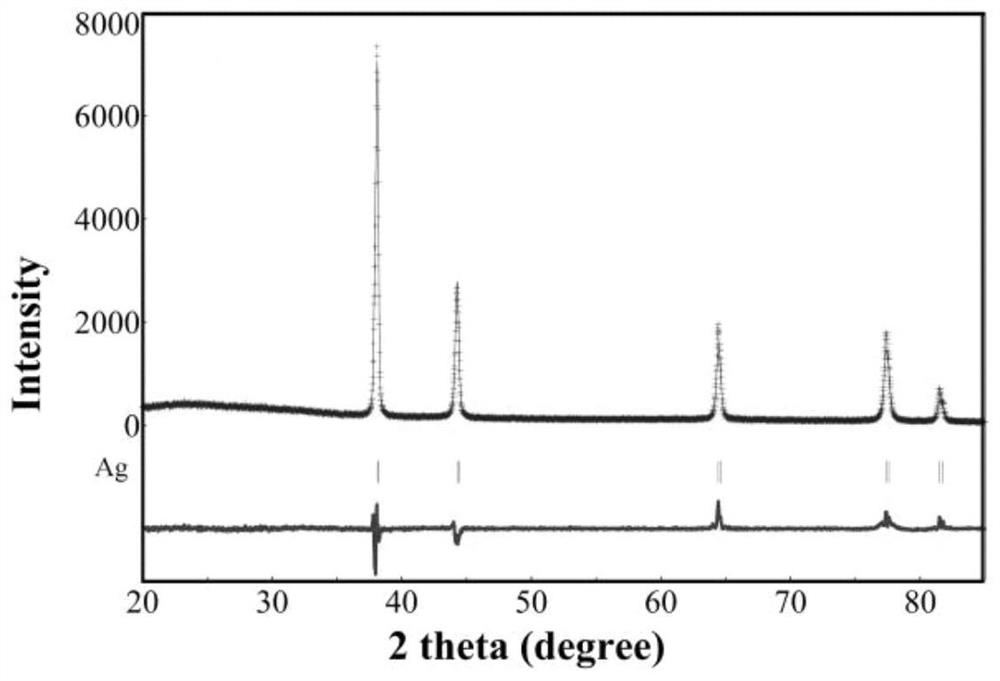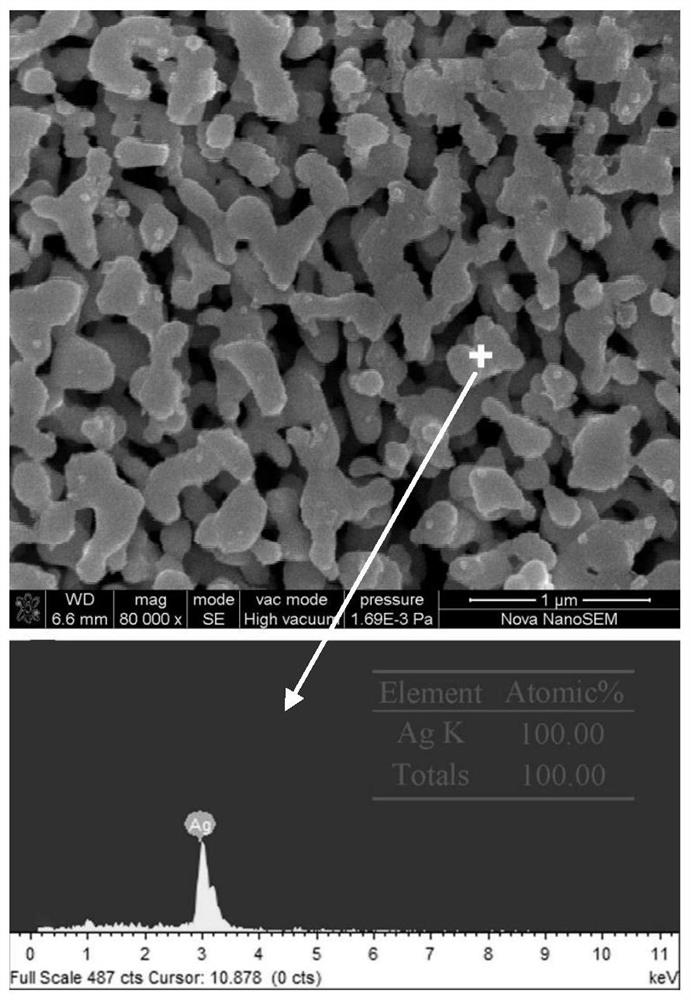Preparation method for nano porous sliver powder
A nanoporous silver, powder technology, applied in nanotechnology, nanotechnology, nanotechnology for materials and surface science, etc., can solve the problem of low yield, difficult large-scale production, complex electrochemical dealloying process of alloy strips, etc. problem, to achieve the effect of simple process, easy large-scale production and high purity
- Summary
- Abstract
- Description
- Claims
- Application Information
AI Technical Summary
Problems solved by technology
Method used
Image
Examples
Embodiment 1
[0023] According to the atomic ratio of 1:4, and considering the burning loss of 2% zinc, weigh silver flakes and zinc particles with a purity of not less than 99.5%, and melt them into silver-zinc alloys by vacuum induction melting method; the alloy obtained by melting Mechanically pulverize into a powder with a particle size of less than 200 mesh; pour the silver-zinc alloy powder into 1mol / L sulfuric acid solution, corrode at 30°C for 4 hours; pour the corroded solid product into 12mol / L hydrochloric acid solution, The post-leaching treatment is carried out for 4 hours under the condition of ℃; the solid product of the post-leaching is washed with distilled water and alcohol successively to neutrality, and then vacuum-dried to obtain the nanoporous silver. Depend on figure 1 , figure 2 and image 3 It can be seen that the obtained nanoporous silver powder is composed of a single Ag phase and has a uniform three-dimensional connected nanoporous structure with a pore size ...
Embodiment 2
[0025] According to the atomic ratio of 1:4, and considering the burning loss of 2% zinc, weigh silver flakes and zinc particles with a purity of not less than 99.5%, and melt them into silver-zinc alloys by vacuum induction melting method; the alloy obtained by melting Mechanically pulverize into powder with a particle size of less than 200 mesh; pour silver-zinc alloy powder into 1mol / L sulfuric acid solution, and corrode at 30°C for 8 hours; pour the corroded solid product into 10mol / L hydrochloric acid solution, The post-leaching treatment is carried out at ℃ for 8 hours; the solid product of the post-leaching is washed with distilled water and alcohol successively to neutrality, and then vacuum-dried to obtain the nanoporous silver powder.
Embodiment 3
[0027] According to the atomic ratio of 1:4, and considering the burning loss of 2% zinc, weigh silver flakes and zinc particles with a purity of not less than 99.5%, and melt them into silver-zinc alloys by vacuum induction melting method; the alloy obtained by melting Mechanically pulverize into a powder with a particle size of less than 200 mesh; pour the silver-zinc alloy powder into 1mol / L sulfuric acid solution, corrode at 30°C for 6 hours; pour the corroded solid product into 15mol / L hydrochloric acid solution, The post-leaching treatment is carried out at ℃ for 4 hours; the solid product of the post-leaching is washed with distilled water and alcohol successively to neutrality, and then vacuum-dried to obtain the nanoporous silver powder.
PUM
| Property | Measurement | Unit |
|---|---|---|
| particle size | aaaaa | aaaaa |
| size | aaaaa | aaaaa |
Abstract
Description
Claims
Application Information
 Login to View More
Login to View More - R&D Engineer
- R&D Manager
- IP Professional
- Industry Leading Data Capabilities
- Powerful AI technology
- Patent DNA Extraction
Browse by: Latest US Patents, China's latest patents, Technical Efficacy Thesaurus, Application Domain, Technology Topic, Popular Technical Reports.
© 2024 PatSnap. All rights reserved.Legal|Privacy policy|Modern Slavery Act Transparency Statement|Sitemap|About US| Contact US: help@patsnap.com










